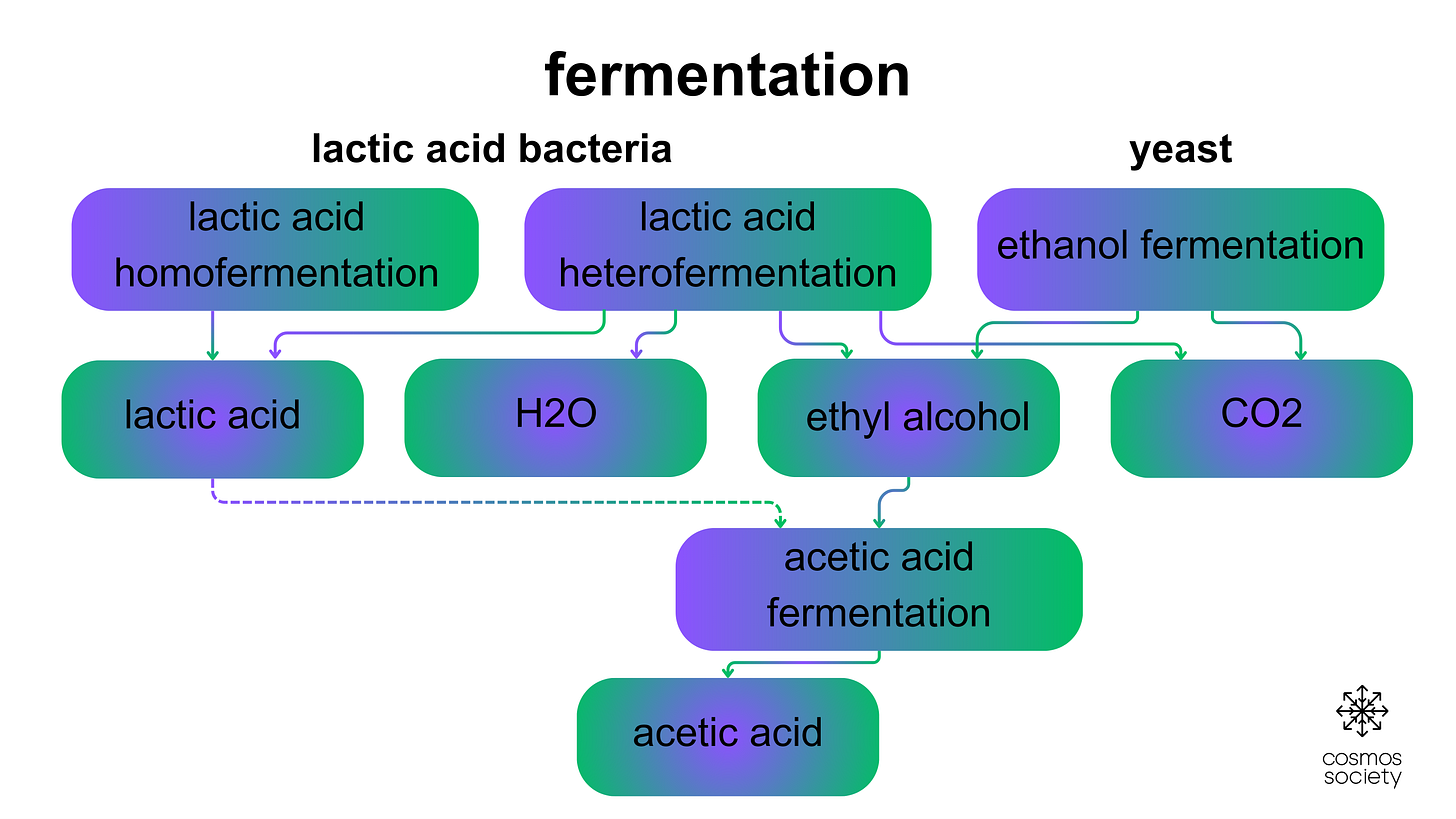Use this guide to easily identify the main types of fermentation — lactic, ethanol, acetic, alkaline, and mold — and understand how each one uniquely transforms flavors and preserves foods.
Lactic Acid Fermentation
In lactic acid fermentation, bacteria convert sugars into lactic acid, which lowers the pH of the food. This acidic environment inhibits harmful bacteria, preserving the food and giving it a tangy flavor. Common examples include yogurt, kimchi, and sauerkraut. The process enhances taste and texture while also increasing the food's shelf life by creating conditions unfavorable to spoilage organisms.
LAB can be divided into two types based on how they process sugars. Homofermentative LAB focus on turning sugars mostly into lactic acid, which helps create a tangy flavor and preserves the food. This type is common in making yogurt and certain cheeses. Heterofermentative LAB, on the other hand, produce not just lactic acid but also small amounts of other compounds like carbon dioxide and alcohol, contributing to a more complex taste and texture. These bacteria are often used in products like sauerkraut and sourdough bread, where their diverse byproducts add unique flavors.
Ethanol Fermentation
Ethanol fermentation involves yeasts converting sugars into ethanol and carbon dioxide. This process is essential for brewing alcoholic beverages like beer and wine, as well as for baking bread, where the carbon dioxide helps dough rise. The resulting alcohol acts as a preservative in drinks, providing flavor and contributing to the fermentation's overall preservation effects. Ethanol fermentation also creates distinct flavors and aromas in various products.
Acetic Acid Fermentation
Acetic acid fermentation is driven by acetic acid bacteria that oxidize ethanol to produce acetic acid. This process imparts the characteristic tangy taste to vinegar. Different types of vinegar, such as apple cider and balsamic, are made through this method. The production of acetic acid not only enhances flavor but also extends the shelf life of the vinegar by creating an environment that inhibits microbial growth.
In addition to converting ethanol to acetic acid, Acetic Acid Bacteria (AAB) can also oxidize lactic acid into acetic acid. This dual ability allows AAB to enhance the tangy flavor and acidity in fermented products, contributing to the characteristic sharpness in vinegar and other similar foods. The process involves breaking down lactic acid with oxygen, yielding acetic acid and water. Read about complexity of flavor that developes due to Lactic and Acetic Acid Production in Sauerkraut Fermentation.
During kombucha fermentation, a symbiotic culture of bacteria and yeast (SCOBY) converts sugars into ethanol and lactic acid. Acetic Acid Bacteria (AAB) then oxidize the ethanol and lactic acid into acetic acid, giving kombucha its distinct tangy flavor. This fermentation process also produces carbon dioxide, resulting in the beverage's natural fizziness and sour taste.
Alkaline Fermentation
Alkaline fermentation involves using alkaline substances to raise the pH level of foods, creating a basic environment. This process alters the food’s texture and flavor over time. Century eggs are a prime example, where the alkaline conditions change the egg white to a dark, gelatinous form and the yolk to a creamy, rich texture. The high pH also impacts the food’s overall taste, making it unique and distinctive.
Mold Fermentation
Mold fermentation, particularly involving Aspergillus oryzae, breaks down starches into simpler sugars and proteins into amino acids. This process is crucial for developing umami flavors in products like miso, soy sauce, and sake. The mold's enzymatic activity not only enhances the food's taste but also contributes to its texture. By transforming carbohydrates and proteins, mold fermentation creates complex flavors and adds depth to various traditional foods.







Can you do an article about Water Kefir please?